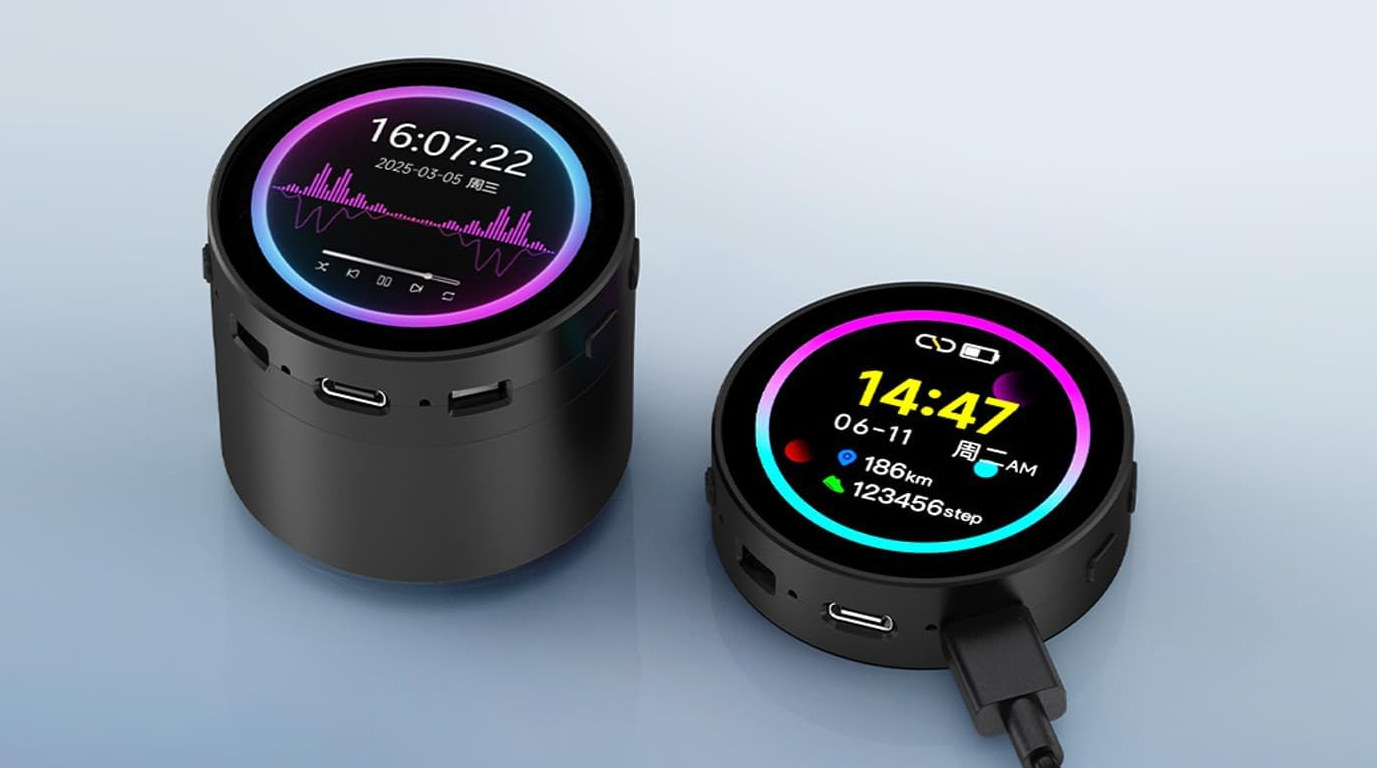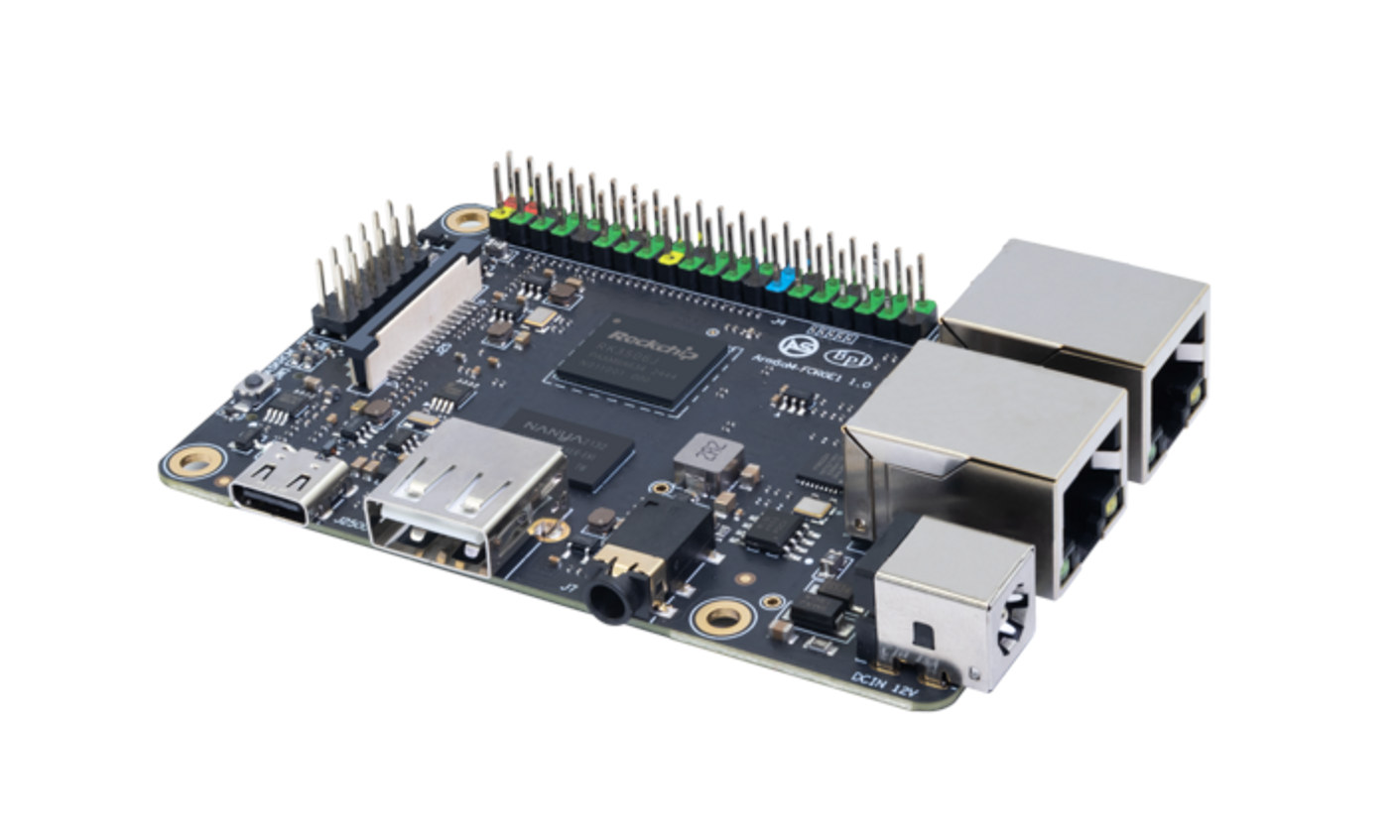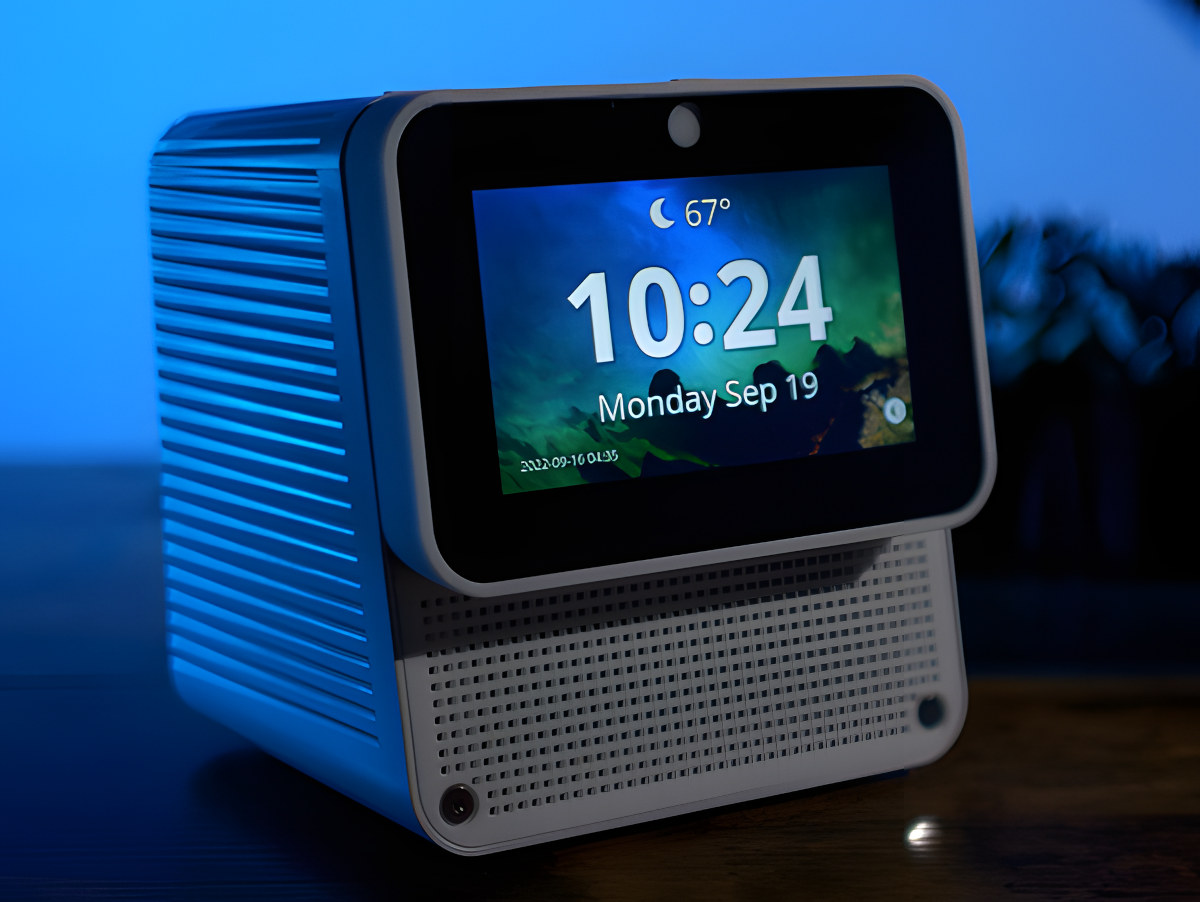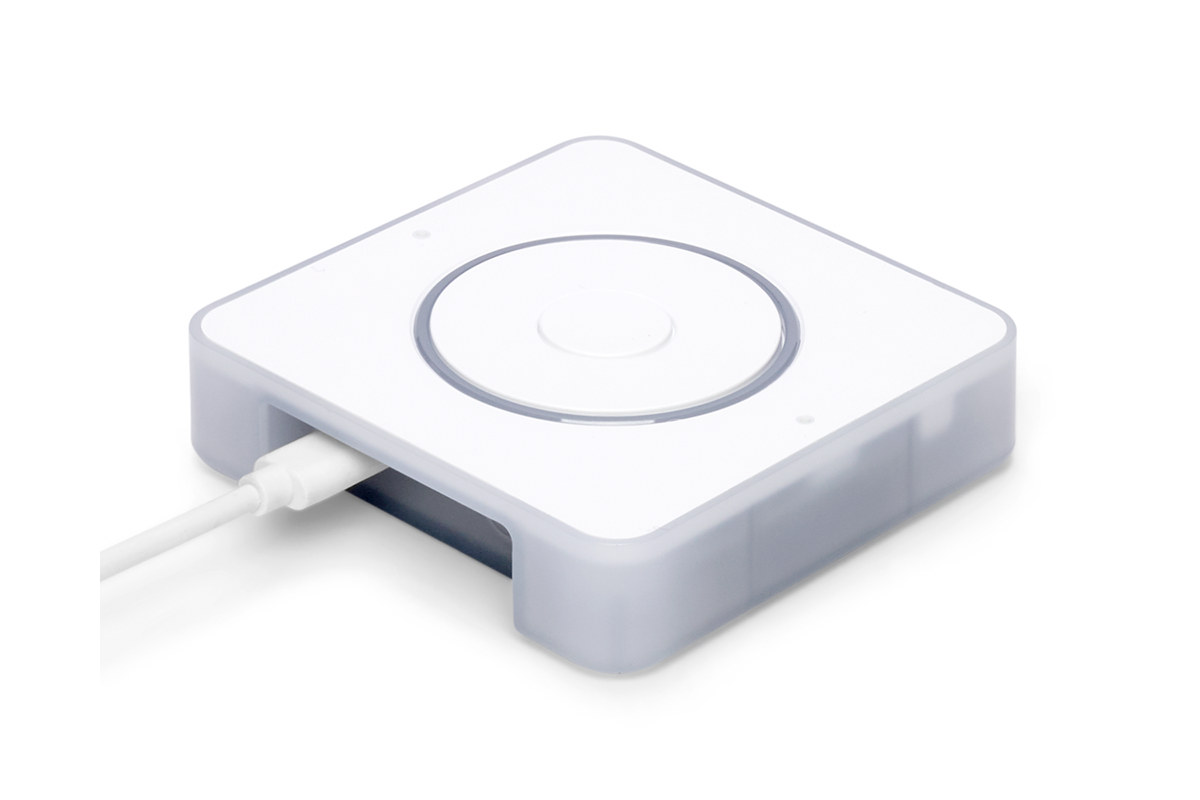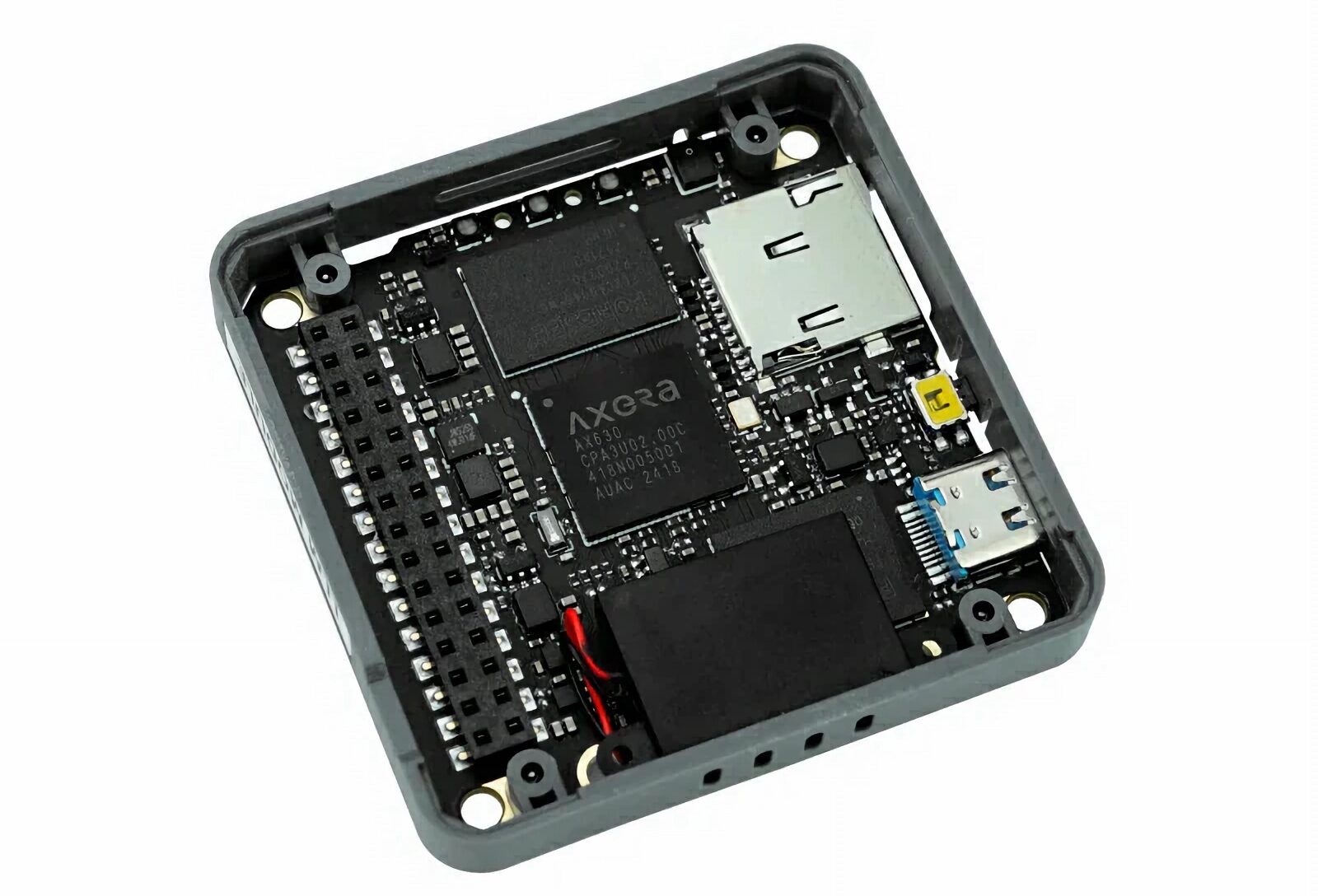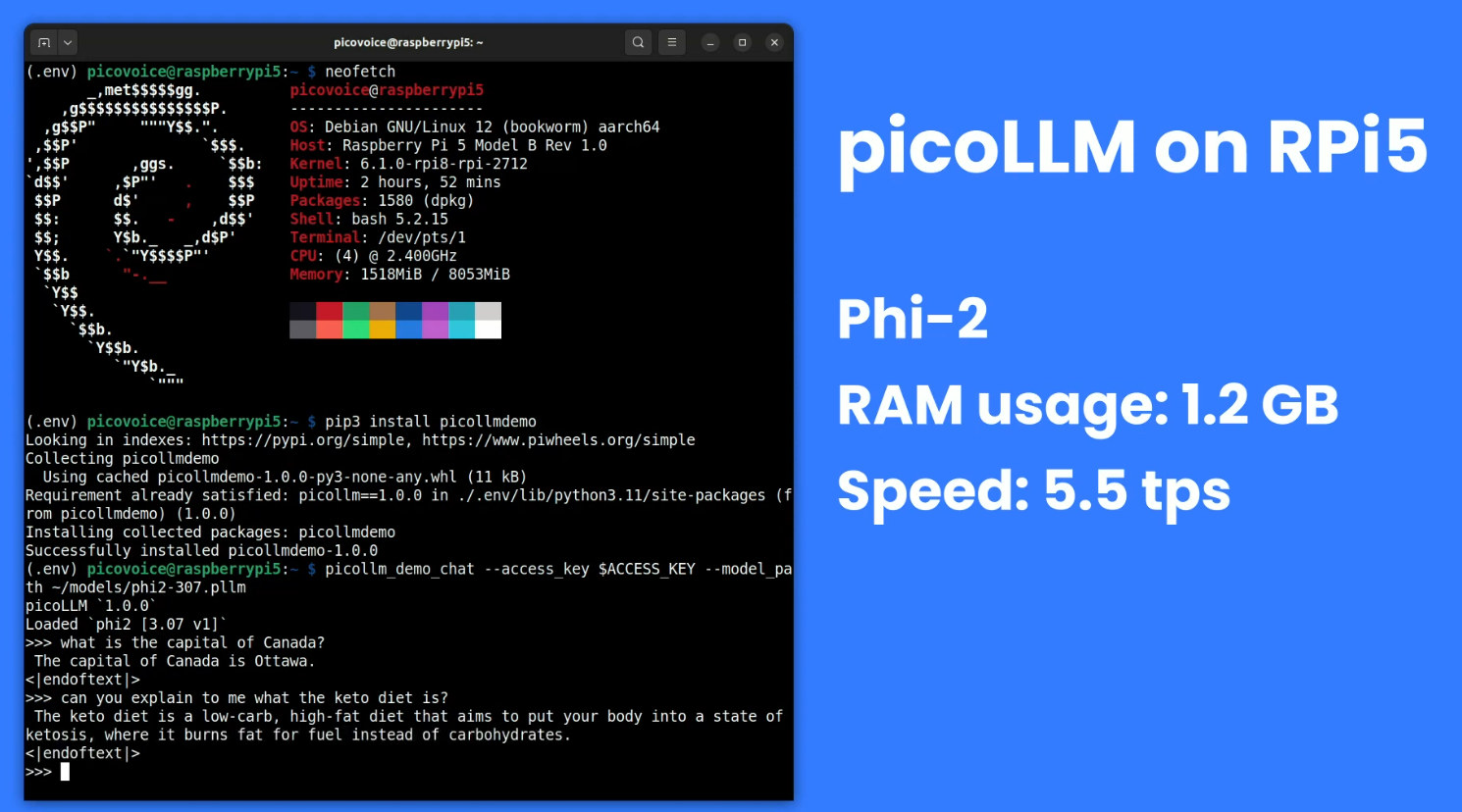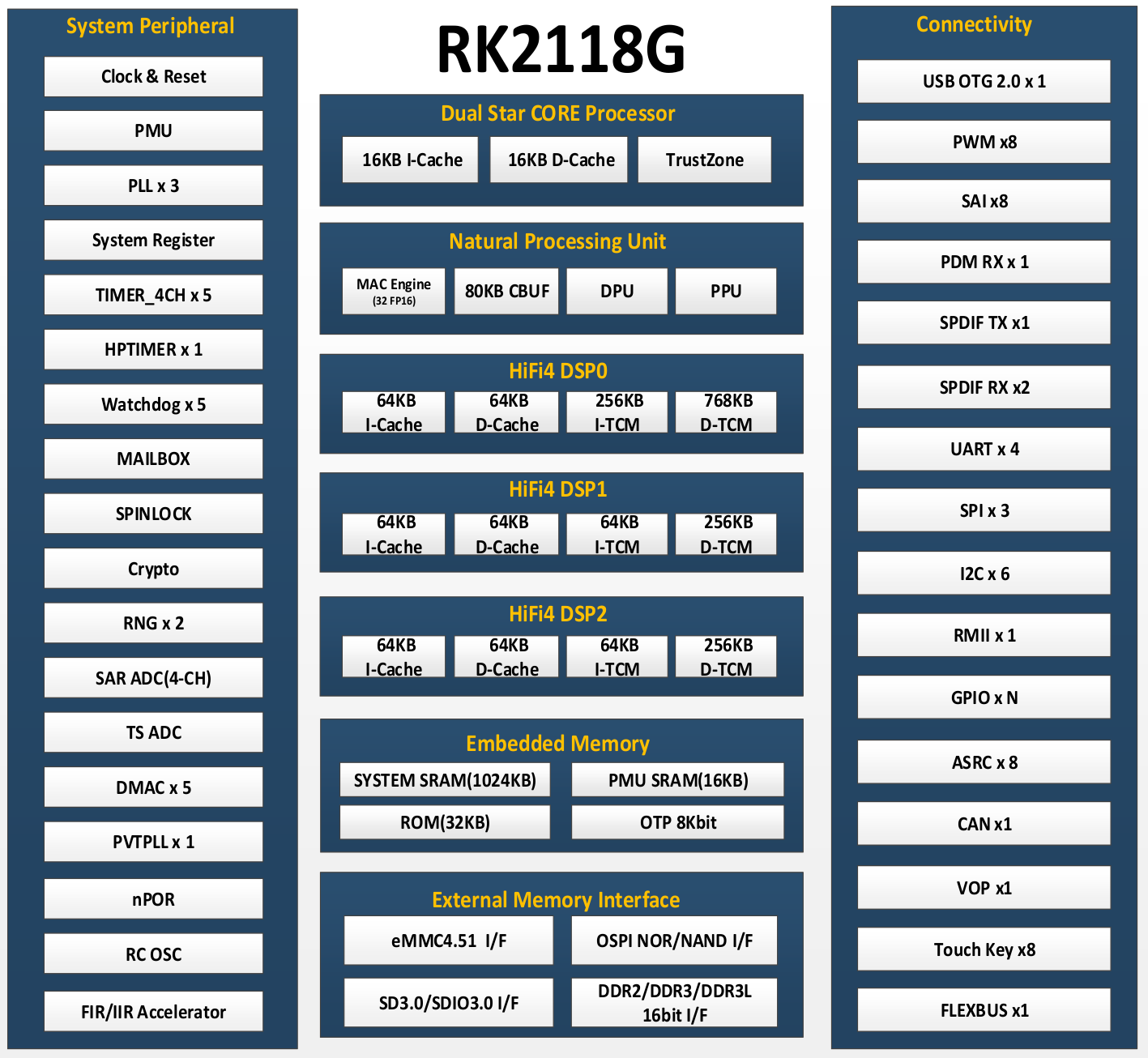Waveshare ESP32-S3-Touch-LCD-1.85C is an ESP32-S3 development kit with a 1.85-inch round touchscreen display with 360×360 resolution, support for Wi-Fi & Bluetooth BLE 5, and a built-in microphone. There’s also the ESP32-S3-Touch-LCD-1.85C-BOX with the same specifications, but an additional box with a speaker and a 3.7V battery. Both versions come with 16MB SPI flash, a microSD card slot, a USB-C port, a few buttons, GPIO and I2C expansion headers, and can be used as music players, smart speakers, HMI solutions, etc… It’s not quite the first ESP32-S3 audio + display devkit we’ve covered, as Waveshare introduced the ESP32-S3-Touch-AMOLED-1.8 earlier this year with a squared AMOLED display, and Wireless Tag launched the ESP32 Agent Dev Kit to interface with LLMs. ESP32-S3-Touch-LCD-1.85C specifications: SoC – Espressif ESP32-S3R8 CPU – Dual-core Tensilica LX7 microcontroller up to 240 MHz with vector instructions for AI acceleration Memory – 8MB PSRAM Wireless – WiFi 4 and Bluetooth […]
$23 ArmSoM Forge1 industrial SBC is powered by Rockchip RK3506J SoC
ArmSoM Forge1 is an industrial SBC (single board computer) powered by the Rockchip RK3506J triple-core Cortex-A7 processor designed for Smart Audio, HMI, and factory automation applications. The Forge1 is equipped with 512MB RAM, 512MB NAND flash, two Fast Ethernet ports, a MIPI DSI display connector, USB Type-A and Type-C ports, an audio jack, a 40-pin GPIO header partially compatible with Raspberry Pi HATs, and a 16-pin header with speaker output, microphone input, RS-485, and CAN Bus. ArmSoM Forge1 specifications: SoC – Rockchip RK3506J CPU 3x Arm Cortex-A7 core up to 1.5 GHz Arm Cortex-M0 real-time core GPU – 2D GPU only No VPU, no NPU System Memory – 512MB DDR3L Storage 512MB SPI NAND flash MicroSD card Video Output – 2-lane MIPI DSI connector up to 1280 x 1280@ 60FPS Audio 3.5mm audio jack Speaker and Mic via expansion header Networking – 2x 100Mbps Ethernet RJ45 ports USB 1x USB […]
The OpenVoiceOS Foundation aims to enable open-source privacy and customization for voice assistants
The OpenVoiceOS Foundation, or OVOS Foundation for shorts, is a non-profit organization dedicated to advancing open-source voice assistant technology and offers an open-source privacy-focus alternative to voice assistant by large companies like Amazon, Google, and Apple. One of the founders, Peter Steenbergen (j1nx), explained to us it all started when he read an article on CNX Software about Mycroft Mark II voice assistant hardware in 2018. He ended up being involved and created “MycroftOS“, later renamed to “OpenVoiceOS – Mycroft Edition”, as a Just Enough OS utilizing Buildroot and working on the Mark II. There were some tensions with the open-source community at some point, and the Mycroft project went south from there and the company had to close in 2023. Eventually, OpenVoiceOS took over the codebase of Mycroft A.I. and managed to merge lingering PR from the open-source community. Together with NEON A.I., they took over the Mycroft A.I. community […]
Fully enclosed ESP32-S3 board features 1.8-inch AMOLED, microphone & speaker for AI audio applications
Waveshare ESP32-S3-Touch-AMOLED-1.8 is an ESP32-S3 development board with an AMOLED display and AI audio support fully housed in a plastic enclosure. The most interesting feature of this devkit is its 1.8-inch AMOLED display with a 100000:1 contrast ratio and a wide 178° viewing angle, plus support for AI speech using its built-in microphone and speaker, and a built-in battery for IoT and AI applications. Other features include a QMI8658 6-axis IMU for motion detection, a PCF85063 RTC for time, and an ES8311 audio codec for high-quality audio. The ESP32-S3 provides Bluetooth and Wi-Fi connectivity and the board also features a USB-C port for power and programming. The AXP2101 power management IC enables battery charging and optimization, while GPIO, I2C, and UART pads allow expansion. Waveshare ESP32-S3-Touch-AMOLED-1.8 specifications Wireless MCU – Espressif Systems ESP32-S3R8 CPU – Dual-core Tensilica LX7 @ up to 240 MHz with vector instructions for AI acceleration. Memory – […]
$59 Voice “Preview Edition” adds an offline smart speaker to your Home Assistant server
Nabu Casa has just launched the Home Assistant Voice Preview Edition, a little ESP32 device with an XMOS XU316 audio processor, a dual-microphone array, an internal speaker, and a 3.5mm audio jack, that adds offline smart speaker functions to your Home Assistant server through WiFi. If your Home Assistant server is powerful enough, voice processing will be done directly on your local hardware using Home Assistant Voice software, but with lower-end hardware like a Raspberry Pi 4, audio processing can be done via a privacy-focused cloud instead. The solution also supports expansion thanks to a Grove connector on the bottom of the device. Voice Preview Edition specifications: SoC – Espressif ESP32-S3 dual-core Xtensa LX7 @ up to 240 MHz with vector extension for ML acceleration, 2.4 GHz WiFi & Bluetooth 5.0 LE connectivity Memory- 8 MB octal PSRAM Storage – 16 MB flash Audio DSP/Processor – XMOS XU316 with 16 […]
M5Stack releases AX630C-powered offline “Module LLM” for local smart home and AI applications
The M5Stack Module LLM is yet another box-shaped device from the company that provides artificially intelligent control without internet access. It is described as an “integrated offline Large Language Model (LLM) inference module” which can be used to implement local LLM-based solutions in smart homes, voice assistants, and industrial control. Module LLM is powered by the AX630C SoC, equipped with 4GB LPDDR4 memory, 32GB storage, and a 3.2 TOPS (INT8) or 12.8 TOPS (INT4) NPU. M5Stack says the main chip has an average runtime power consumption of 1.5W, making it suitable for long-term operation. It has a built-in microphone, speaker, microSD card slot, and USB OTG. The USB port can connect peripherals such as cameras and debuggers, and the microSD card slot supports cold and hot firmware updates. The M5Stack Module LLM joins the list of other offline, on-device LLM-based solutions, such as the SenseCAP Watcher, Useful Sensors’ AI in […]
picoLLM is a cross-platform, on-device LLM inference engine
Large Language Models (LLMs) can run locally on mini PCs or single board computers like the Raspberry Pi 5 but with limited performance due to high memory usage and bandwidth requirements. That’s why Picovoice has developed the picoLLM Inference Engine cross-platform SDK optimized for running compressed large language models on systems running Linux (x86_64), macOS (arm64, x86_64), and Windows (x86_64), Raspberry Pi OS on Pi 5 and 4, Android and iOS mobile operating systems, as well as web browsers such as Chrome, Safari, Edge, and Firefox. Alireza Kenarsari, Picovoice CEO, told CNX Software that “picoLLM is a joint effort of Picovoice deep learning researchers who developed the X-bit quantization algorithm and engineers who built the cross-platform LLM inference engine to bring any LLM to any device and control back to enterprises”. The company says picoLLM delivers better accuracy than GPTQ when using Llama-3.8B MMLU (Massive Multitask Language Understanding) as a […]
Rockchip RK2118G/RK2118M dual-core Star-SE Armv8-M microcontrollers target smart audio applications
Rockchip RK2118G and RK2118M smart audio microcontrollers based on a dual-core Star-SE Armv8-M processor, an NPU for smart AI audio processor, three DSPs, 1024KB SRAM, optional DDR memory in package, and a range of peripherals. I first noticed the RK2118M in slides from the Rockchip Developer Conference 2024 last March, but I did not have enough information for an article at the time. Things have now changed since I’ve just received a bunch of datasheets including the one for the RK2118G and RK2118G microcontrollers, which look identical except for the DDR interface and optional built-in 64MB RAM for the RK2118G. The datasheets have only one reference to Arm with the string “Arm-V8M” and nothing else, and Cortex is not mentioned at all. But the slide above reveals the STAR-SE core looks to be an Arm Cortex-M33 core. We also learn the top frequencies for the “STAR-M33″/”STAR-SE” core (300MHz) and the […]


